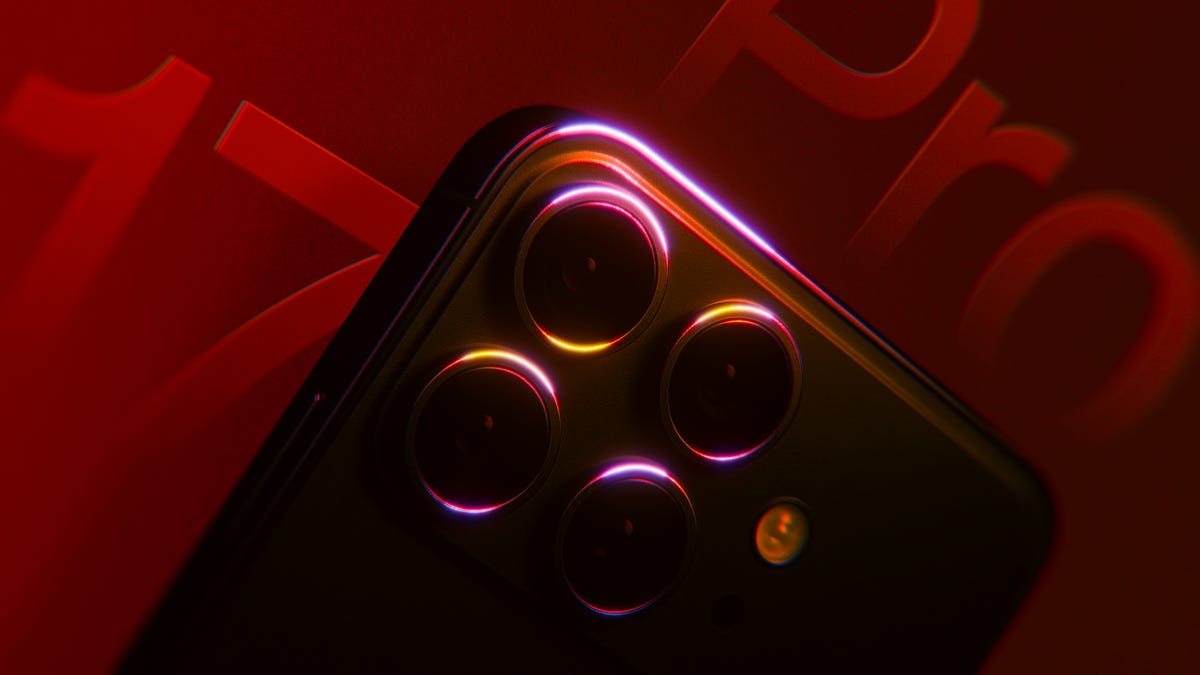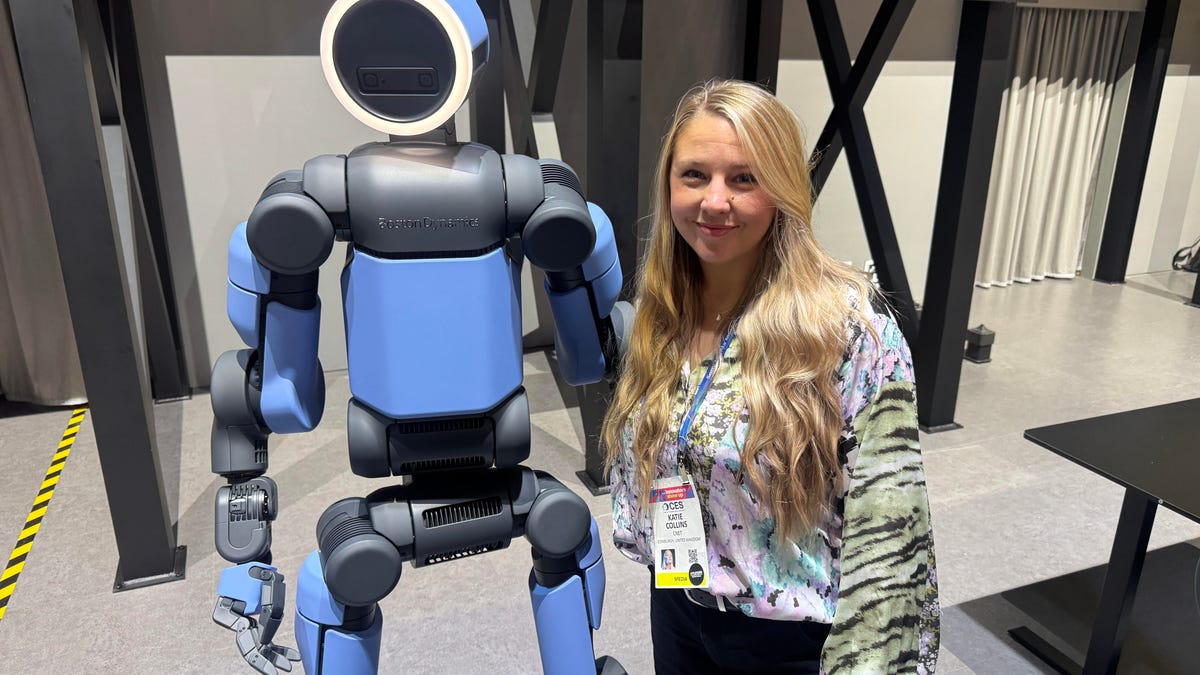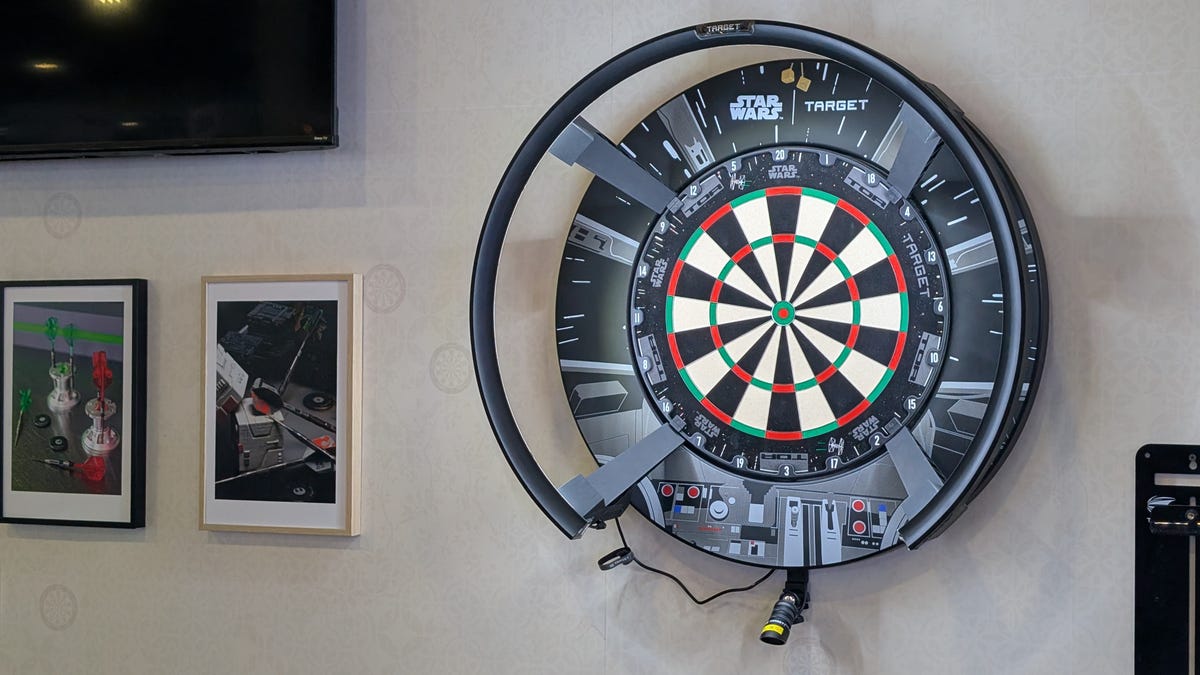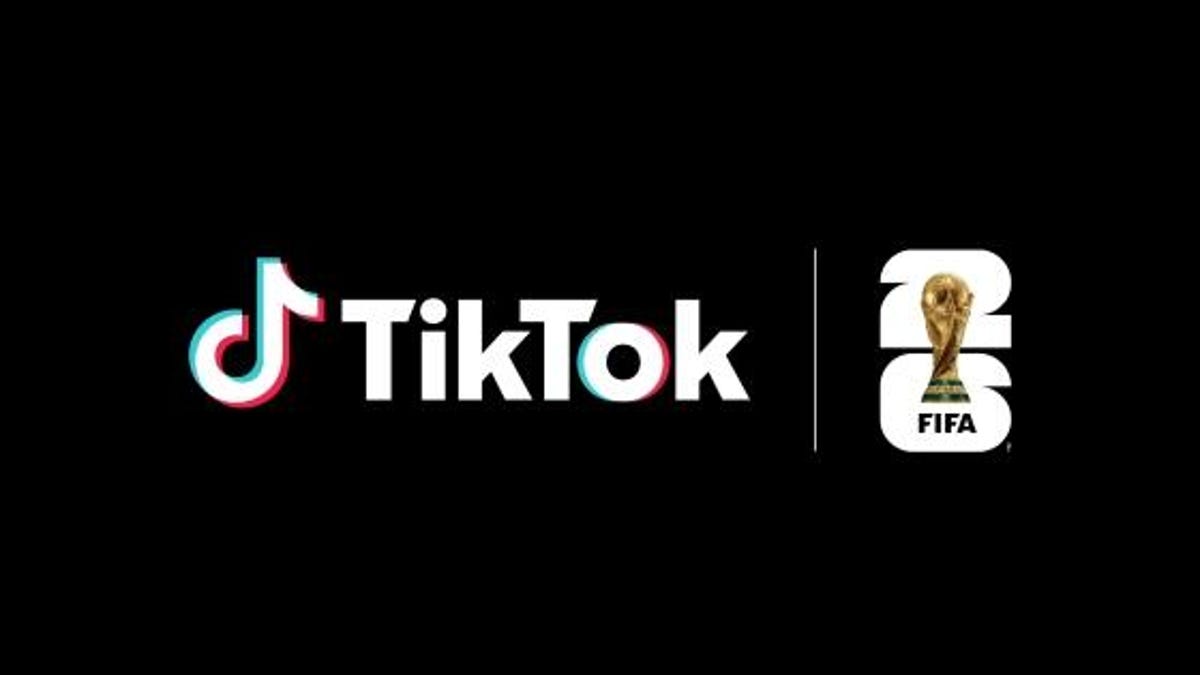Technologies
iPhone 17 Rumors and Leaks Unpacked. Here Are the Features We’re Most Excited About
Tariffs could potentially raise the price of the new iPhone, but we have the scoop on what else to expect.

President Donald Trump’s potential 25% tariff on iPhones could mean a price hike for the rumored iPhone 17 before it’s even released.
Prices could play a big part when the new iPhone is announced, but plenty of other rumors and leaks have fans anticipating what new features an iPhone 17 could bring, including better video capabilities and a new color.
Battery power could be the features to keep your eye on. The rumored iPhone 17 Air could have a thin design balanced by improved battery technology, and the iPhone Pro Max allegedly may be getting thicker to make room for more battery power.
With potential tariffs still looming and Apple’s WWDC announcement coming soon, we’re tracking all the biggest rumors and leaks and sharing what we know so you can have an idea of what’s coming next with the iPhone.
iPhone 17 release date: When is the next iPhone coming out?
Over the last several years, Apple has consistently announced its new phones in the first half of September. This will likely be the case with the full iPhone 17 lineup, with the exception of the iPhone 17E, which could arrive in early 2026, according to Apple analyst Ming-Chi Kuo and a report from The Information.
The iPhone 17 lineup may be the last to follow this fall-release model. Starting with the iPhone 18, Apple will reportedly split its phone releases so that lower-cost iPhones launch in the first half of the year and the higher-end Pro models become available later in the year. But that isn’t expected to happen until 2026, so you can likely still expect the iPhone 17 Pro to become available this fall.
Preorders for a new iPhone typically begin the Friday after the announcement, with the phone shipping a week later.
iPhone 17 Price: Will tariffs increase the cost of the next iPhone?
President Donald Trump has raised, lowered and paused tariffs a dizzying number of times since February, all of which could potentially affect the cost of the iPhone 17.
Apple, which could move much of US iPhone production from China to India, has escaped many of the tariff hikes thanks to a reciprocal tariff exemption list that includes many phones, laptops and other electronics that Apple produces.
But all the reprieves appear to be temporary, so reciprocal tariffs could still potentially affect prices by the time of the iPhone 17 release.
Trump threatened Apple with a 25% tariff on all iPhones made outside the in a social media post on May 23. Later that day, he said that all smartphones — not just iPhones — would be hit with the 25% tariff by the end of June if they don’t move operations to the US.
Regardless of how tariffs play out, Apple has plans to raise iPhone prices later this year, The Wall Street Journal reported. Apple apparently plans to ascribe the price increase to better features and design costs so it can avoid pointing the finger at tariffs and incurring the wrath of Trump (like Amazon temporarily did).
CNET Managing Editor Patrick Holland, who’s been reviewing phones for CNET since 2016, points out that the iPhone is overdue for a price bump. He noted that Apple has never increased the price for an iPhone Pro ($999) since the iPhone X was first introduced in 2017.
So yes, you should expect to pay more for the iPhone 17, regardless of tariffs.
New iPhone 17 colors
Rumors of a new color for the iPhone started in April, when Twitter user and leaker Majin Bu (not the Dragon Ball Z character) posted that the iPhone 17 Pro and Pro Max could get a sky blue option. The latest MacBook Air models come in sky blue, which could give you some idea of the soft hue we’ll see on the iPhone if it goes in the same direction.
For reference, the iPhone 16 and Plus made a splash last year when they debuted pink, teal and ultramarine color options, alongside the standard white and black. The iPhone 16 Pro and Pro Max introduced a new color, desert titanium — a restrained shade of peach — alongside the classic natural titanium, white titanium and black titanium options.
iPhone 17 Pro camera bump redesign
The iPhone 17 Pro’s camera has been the subject of multiple rumored changes, most notably that Apple could add a horizontal camera bar that spreads across the width of the phone. The front-facing «selfie camera» could also be getting an upgrade.
Back in January, Bu posted a leaked image on X suggesting that the phone could feature a pill-shaped camera bar that looks a lot like the camera bar on Google’s Pixel 9 phone.
That raised the question of whether the iPhone 17 Pro would align the three camera lenses in a single row or leave them stacked in a pyramid design, as it did with the iPhone 16 Pro.
In February, Bu posted CAD renders of what could be the iPhone 17 lineup, and Front Page Tech also shared iPhone 17 Pro renders in a video. Both showed horizontal camera bars for the iPhone 17 Pro models that keep the stacked lens layout.
And as for your selfies: The front-facing camera will reportedly be upgraded from the iPhone 16’s 12 megapixels to 24 megapixels on all iPhone 17 models, according to analyst Jeff Pu.
Pu wrote in March that the iPhone 17 Pro and Pro Max will feature a 48-megapixel telephoto rear camera, up from 12 megapixels on the iPhone 16 Pro models. That would mean all three cameras on the iPhone 17 Pro models — Fusion, ultrawide and telephoto — would be 48 megapixels.
Leaked Specs: iPhone 17 vs. iPhone 17 Pro vs. iPhone 17 Pro Max
Specs for the iPhone 17 are more grist for the rumor mill.
Display
After the backlash over Apple not updating the 60Hz display on the iPhone 16 and 16 Plus, rumors of a 120Hz display (Pro Motion) on all iPhone 17 models could be welcome news, along with possibly adding the always-on display to the baseline model.
One feature you likely won’t see with the new iPhone 17 Pro models is an antireflective display, which CNET’s Patrick Holland called one of the best attributes of the Samsung Galaxy S25 Ultra. A source told MacRumors that Apple had to scrap plans for a more scratch-resistant display because of scaling issues with the coating process.
Additionally, Pu said the iPhone 17 Pro Max may reduce the size of its Face ID sensor, so it could have a narrower Dynamic Island, but the other iPhone 17 models would likely stay the same size.
Memory
Apple Intelligence and AI are likely to play more prominent roles with the iPhone 17. To support the new features, all the iPhone 17 models will step up to 12GB of RAM, tipster Digital Chat Station reported in April. Kuo has also suggested this could happen, according to Digital Trends.
Considering that the iPhone 16 lineup had 8GB of RAM across all models, this could be a big upgrade for the iPhone 17.
Frame
There’s been plenty of discussion about whether the iPhone 17 Pro will ditch its titanium alloy frame for an aluminum one. The most recent rumors predict the iPhone 17, iPhone 17 Pro and iPhone 17 Pro Max will all have aluminum frames, according to Pu.
iPhone 17 battery life
The iPhone 17 Air might have to scale back on battery life to make a thinner design possible, although the latest rumor from AppleInsider is that it might use a silicon-anode battery that could help extend the battery life. However, rumors are that the iPhone 17 Pro will likely get a battery boost.
In May, Pu said the baseline iPhone 17 will likely feature Apple’s in-house A19 chip, while the Pro could have the A19 Pro chip. The iPhone 16 is powered by an A18 chip, which offers improved efficiency for better battery life. According to a report by 9to5Mac this month, the iPhone 17 Pro Max may be 8.725mm thick, compared to the iPhone 16 Pro Max, which clocks in at 8.25mm thick. That larger size could potentially make room for more battery.
Are new iPhone rumors and leaks to be trusted?
Here’s the part where I come in and say: Everything’s a rumor until Apple officially releases the next iPhone. Rumors and speculation leading up to the iPhone’s release are often based on insider knowledge or leaked information from teams working on the iPhone’s designs, but those designs are works in progress — not necessarily the final product.
Technologies
I Got Up Close and Personal With Boston Dynamics’ New Atlas Robot
Before Atlas takes its first steps into the world of work later this year, I found myself face-to-face with CES 2026’s most talked-about robot on the show floor.

When I say that I went hands-on with the new Boston Dynamics Atlas robot, I mean that I actually held hands with it. This humanoid robot, which CNET just awarded the Best Robot of CES Award, is one of the most advanced in the world, and I couldn’t pass up the opportunity to get up close and personal with it.
This product version of the robot, which is set to be shipped to Hyundai factories imminently to start working, has been the talk of CES this year. The specific Atlas robot I encountered was a static model that wasn’t turned on or fully operational. Our interactions were, therefore, sadly one-sided. Still, I ran my hands over its soft-touch plastic shell and gently prodded at its finger joints, wondering how it would feel if they gripped me back.
People tend to have varying feelings about humanoid robots — understandable given that they are built to some degree in our image, while also usually being stronger than us, with «brains» that we don’t fully understand. Atlas definitely evokes contradictory emotions for me — even more so when I stood face-to-face with it.
I’m in awe of the engineering, a little fearful of its capabilities, hesitant about what it could mean for the future of humanity and charmed by its design and styling. The periwinkle blue iteration of Atlas that I met on the show floor at CES 2026 almost bears more resemblance to a Dyson product than it does the industrial robots that defined Boston Dynamics’ early days, when it was best known for its work with DARPA.
«There’s a lot of really specific things about this robot that probably look a little weird,» said Zachary Jackowski, Boston Dynamics VP and general manager of Atlas. He pointed to the legs, which he described as «like nothing anyone else was doing.»
Atlas’ thighs are narrow set and in line with the torso, while the calves are wider set, attached to their upper counterparts with a circular joint. This robot is, in fact, all subtle curves and soft lines. There are no harsh edges or stark angles.
During a year when CES has been flooded with humanoid robots, Atlas definitely does stand out due to its design. It appears both less classically human and less industrial than some of its peers, while also lacking the often intimidating, featureless faces they tend to exhibit. Instead, it has two low-set cameras resembling eyes placed where you’d usually expect a mouth to be. Its face is a perfect flat circle, defined by an LED halo that gives it a somewhat Pixar lamp effect.
I asked Jackowski why Boston Dynamics decided to skew so relatively unhuman with this version of its humanoid. «Well, it’s not a human,» he said. «It projects the wrong first impression about a robot to have it pretend to be something that it’s not.»
Particularly in the early days of humanoids, he added, robots won’t have anything like human-like intelligence. People should look at it and see it for what it is — a tool for performing tasks safely and efficiently.
In fact, most of the design decisions were made to keep Atlas as simple, scalable and safe as possible, Jackowski said. I remark that there’s some irony in thinking of a humanoid robot as simple, given the complexity of the technology and development process to bring Atlas to life.
The key to making it simple, Jackowski said, is having a strong enough grasp of the technology to «accomplish the complex thing of building a humanoid robot,» but then being able to take it apart and understand that you can use fewer computers and actuators in it while achieving the same results.
And it’s essential to Boston Dynamics that Atlas is perceived as simple. After all, it’s a general-purpose humanoid, which might eventually be sent far and wide to fulfil all manner of roles. Jackowski calls it the «ultimate generalist.»
Simplicity aside, there are aspects of Atlas that Jackowski believes set it apart from other humanoids at the show. «The repairability of this robot is crazy good,» he said. «The runtime is crazy good. The strength is unlike anything.»
From working in Hyundai’s manufacturing plants, Atlas’s job trajectory is to eventually graduate to many of the same industrial environments where Boston Dynamics’ Spot robot works, before moving to bussing tables in the service industry and eventually into the home. The robot will evolve between now and then, Jackowski said. However, this could be an early glimpse of the type of humanoid that will eventually be our housemate.
That’s some way away, though, which is probably for the best. As I gaze up at Atlas, which I’d guess is around the same height as my husband, my feeling is that, however impressive Atlas is, I’m still not ready for it to move in.
Technologies
This Star Wars Dartboard Has a Secret That Will Stop You From Using the Force to Win
This cool dartboard has cameras to track your score and keep you honest

Right in the middle of the high-tech show floor at CES 2026 sits a pub called the Bull and Barrel with some of the coolest dartboards I’ve seen. Target Darts was showcasing its collaboration with both Star Wars and Xbox. Darts may not be for everyone, but I love «shooting some arrows» in my basement with the family. I also love anything Star Wars themed, so these tick a lot of boxes.
The basic Star Wars set comes with a branded board and wall protector that resembles the cockpit of the Millennium Falcon and costs $200. The board is of very high quality, with a tight-knit sisal fiber face, and the protector is thick enough to keep stray shots out of your drywall. The graphics are cool too, with nods to the original Falcon and even have the gold dice hanging above.
The big tech twist to this board, though, is the Omni light ring around the outside. It uses four cameras to track your dart’s position, then sends that info to an app that keeps score. The scoreboard is crisp and clear and uses the voice of legendary darts announcer John McDonald to narrate your game. It’s pretty great to hear his voice announce my terrible scores.
The Omni also allows you to connect with other players worldwide via shared scoreboards. I love the idea of my dad having a board at his house or playing a match with me at my house. It adds a feeling of community to home darts that you don’t normally get outside a pub or bar.
The Omni is a much more expensive proposition than the Star Wars set, coming in at $650, but if you’re serious about the game and a Star Wars fan, it looks to be a great investment.
Technologies
TikTok and FIFA Team Up for World Cup 2026 Coverage
A new team-up aims to make this summer’s tournament more accessible for fans.

If you hadn’t already planned on swiping on TikTok videos of the 2026 FIFA World Cup, a new partnership between the social media platform and tournament organizer FIFA could motivate you to start stretching out your thumbs.
As the soccer tournament nears — it will take place from June 11 to July 19 and span 16 host cities in Canada, Mexico and the US — TikTok will become FIFA’s first «preferred platform.» According to a FIFA statement on Thursday, this entails TikTok providing more coverage of the World Cup, including original content and even livestreaming of some portions of matches.
Don’t miss any of our unbiased tech content and lab-based reviews. Add CNET as a preferred Google source.
You can use the FIFA World Cup 2026 hub on TikTok to find content, match tickets and viewing information, as well as participation incentives such as custom stickers and filters.
In the US, World Cup games will air live across Fox and FS1. If you don’t have cable, you can get a live TV streaming service, such as YouTube TV, which includes those channels. Additionally, every match will stream live on Fox One and the Fox Sports app.
«FIFA’s goal is to share the exhilaration of the FIFA World Cup 2026 with as many fans as possible,» FIFA Secretary General Mattias Grafström said.
-

 Technologies3 года ago
Technologies3 года agoTech Companies Need to Be Held Accountable for Security, Experts Say
-

 Technologies3 года ago
Technologies3 года agoBest Handheld Game Console in 2023
-

 Technologies3 года ago
Technologies3 года agoTighten Up Your VR Game With the Best Head Straps for Quest 2
-

 Technologies4 года ago
Technologies4 года agoBlack Friday 2021: The best deals on TVs, headphones, kitchenware, and more
-

 Technologies4 года ago
Technologies4 года agoGoogle to require vaccinations as Silicon Valley rethinks return-to-office policies
-

 Technologies4 года ago
Technologies4 года agoVerum, Wickr and Threema: next generation secured messengers
-

 Technologies4 года ago
Technologies4 года agoOlivia Harlan Dekker for Verum Messenger
-

 Technologies4 года ago
Technologies4 года agoiPhone 13 event: How to watch Apple’s big announcement tomorrow
